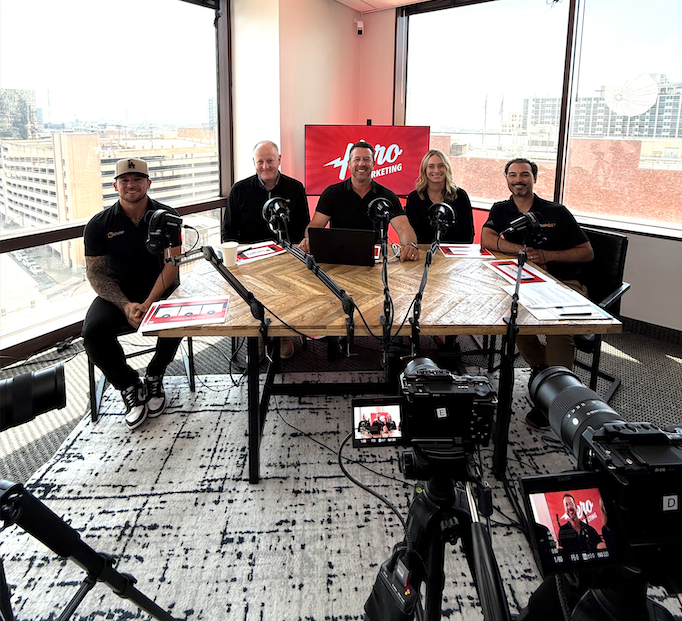Attention is Everything: Winning the Crowd With Great Publicity
Information--on its own--isn’t profitable. Sure, it can be valuable if you put it to use. But placing a price tag on ideas is gradually fizzling out; everything is available online, for free, if you know where to look. Some businesses can still turn a profit by brokering information, but they are simply saving their customers time by organizing it for them. The information is not truly a part of the purchase.

Information--on its own--isn’t profitable.
Sure, it can be valuable if you put it to use. But placing a price tag on ideas is gradually fizzling out; everything is available online, for free, if you know where to look. Some businesses can still turn a profit by brokering information, but they are simply saving their customers time by organizing it for them. The information is not truly a part of the purchase.
This is why most marketers have shifted gears; instead of maximizing the amount of information they can give customers, they focus on how much attention they can get from the market. Thomas Edison was an early adopter of the focus on attention; his ability to sell himself got him much further than the quality of his inventions.
“Edison would design visually dazzling experiments to display his discoveries with electricity. He would talk of future inventions...that he had no intention of wasting his energy on, but that made the public talk about him. He did everything he could to make sure that he received more attention than his great rival Nikola Tesla, who may actually have been more brilliant than he was but whose name was far less known.
— Greene
Edison went as far as to refuse a Nobel Prize in physics, as it would have been shared with Tesla, allowing him a share of the limelight and compromising Edison’s monopoly of attention. This iron grip on the public eye led him to massive success, while Tesla’s name slowly died out.
Understand that your ability to draw attention, not your ability to provide great solutions, will make or break your business. Your product could be perfect, but if you fail to move fully into the limelight, you will wither into obscurity.
We’re here to teach you how to get in, and stay in, the limelight.
This article is part of a 4-part series based on concepts from The 48 Laws of Power by Robert Greene. If you haven’t given it a read yet, we’d highly recommend it. It’s linked at the end, along with the other parts of the series.
Let’s get started.
STANDING YOUR GROUND
The public eye is fleeting and ruthless. To survive, your business must immediately separate itself from the crowd. While some may say that a stunt is your best bet for immediate attention, we argue that you must first separate on a core level through your values and mission.
Every brand, whether they realize it or not, is driven by a core set of values, and a mission that unites them. Brands that don’t display their values are instead telling the market--and themselves--that quick profit comes above all else. This is understandable but unattractive.
It’s common for brands to make headlines by fully committing to things outside themselves. This is a bad idea. It’s fine to make your values align with that of another, and support them when it suits you. But with full commitment, you hand over the reins to something that is outside of your control. They gain the power to define you. If they begin to head in a different direction than you want to, you can’t diverge without compromising your entire reputation.
Instead, find your own values and pursue a mission unique to your business. Patagonia provides an incredible example, setting clear values (Build the best product; Cause no unnecessary harm; Use business to protect nature; Not bound by convention) and pursuing an inspiring mission: “We’re in business to save our home planet.” Hit big goals, tackle massive issues, and let your customers experience the feeling of continuous victory through supporting you. You will amass a following.

Base all of your public opinions on your values, and be genuine. Don’t just use them as a mask for public support; it’s far easier to stick to your values when you truly believe in them. Finally, never stray from the path you set for yourself. The assertive, unwavering leader imposes authority and respect in a way that no timid one can.
If your product is incredible enough to essentially sell itself, make your brand name synonymous with it rather than separate from it. Your values and mission come second to your product in your marketing if neither will sell better than it. However, be cautious of possible competitors. If your product could ever be replicated, create a brand name separate from your product to fall back on, should you need it.
If you’re unsure of your values, stop reading this. Your new mission is to find the ‘why’ behind your brand. Fit it into a sentence so it is clear and memorable. Remember: This will be the foundation of your brand’s skyscraper. Pour it carefully.
THE ART OF PUBLICITY STUNTS
A fearless showman, Sir Richard Branson perfectly times one publicity stunt after another to promote his brand, Virgin, and secure attention as nobody else can. Learning to have fun humiliating himself has made Branson billions. His conglomerate has ventured into more verticals than we can count. How is he so successful?
He’s mastered the art of the publicity stunt.
In 1994, Branson launched Virgin Cola, in an attempt to overthrow Coca-Cola and Pepsi. To celebrate the US launch, his team drove down Fifth Avenue in a Virgin Cola branded tank, crashing through a 3-ton wall of coke products before aiming the gun at a Coca-Cola sign. They pretended to fire at it, and the sign (which had been rigged with explosives) blew up. The crowd went wild.

Branson went on to open a wedding store. The name, Virgin Brides, immediately drew attention. He celebrated the grand opening by shaving his beard, putting on blue eyeshadow, and donning a full wedding dress that spurred the store into numerous front-page headlines. He later bungee-jumped off of Palms Hotel Casino in Vegas, to celebrate an inaugural Virgin Atlantic flight. He smacked into the building twice and ripped his pants on the way down, but it only added to the headlines. Falling flat on your face, even literally, can give your business a boost if you know how to spin the press.
Branson spends 25% of his time on marketing and publicity. You don’t have to get your publicity stunts to his level to get your brand noticed, but you should still be investing a fair amount into making headlines.
Notice the pattern: The new business could fall flat on its face, but the Virgin group still moves into the public eye. Branson always wins.
Publicity stunts can achieve three things: showcasing your product, demonstrating your brand’s commitment to its values and mission, or simply drawing attention to your brand name (Branson’s favorite). Plan carefully, and decide a) what you want to achieve and b) how you want your brand to appear before you start thinking about specifics. If you need a prestigious market to take your product seriously, you’ll be going a far different route than the next Branson, who will break nearly any boundary to make headlines.
IMAGES ALWAYS BEAT WORDS
Words are weak.
If you have to explain something, its legitimacy is automatically in question. The more you speak, the less confident your argument comes across, and the more your customer will begin to question you. Images and symbols shortcut this. They impose themselves as a given, leaving no time for reflection. You see something, therefore it is there. There is no question. This is why proper visuals and powerful details are key to successful communication.
“When the con artist Yellow Kid Weil created a newsletter touting the phony stocks he was peddling, he called it the “Red Letter Newsletter” and had it printed, at considerable expense, in red ink. The color created a sense of urgency, power, and good fortune, Weil recognized details like these as keys to [selling]...Since the eye predominates, people will respond more to the color than to the word.
— Greene
Gestures that visually symbolize effort speak louder than any digital message can. This is why handwritten notes work so well, especially when making a first or second impression. Your customers respond more to the medium than the writing; it makes them far more receptive to whatever you write inside.
Understand that no publicity effort you undertake should require a written explanation. Ensure your stunts are clear, simple, and easy to understand from a distance.
LIBERATE YOUR CUSTOMERS: PLAY TO A FANTASY
If you’ve been online recently, you’ve probably seen a few shady ads. You know, the hidden method to make $10,000/day or the quick solution for wrinkles that baffles the nation’s top doctors. Many of us laugh them off, but they are, disappointingly, extremely profitable. Why?
It boils down to this: Make it seem like you can liberate your customers from the reality that imprisons them, and you immediately secure their attention. These ads do a wonderful job of doing this; playing to the fantasies of the public by appearing to contradict the impossible and provide shortcuts to the sublime. You shouldn’t have to scam people to utilize this, but you should be open to selling with any message that plays to the public’s fantasies.
Here are a few big ones that you can build off of:
Reality: Change is slow; it requires hard work, self-sacrifice, and patience.
Fantasy: A “magic” solution will change your life without requiring time, sacrifices, or hard work.
Reality: Social boundaries exist and keep us within the familiar.
Fantasy: Rejecting social restrictions and experiencing unlimited adventure.
Reality: Society is fragmented and full of conflict. True unity is impossible.
Fantasy: People can quickly unite over some superficiality or seemingly insignificant thing.
Reality: The past cannot be changed.
Fantasy: Present actions can negate events of the past.
Reality: Everything is extremely complicated.
Fantasy: A simple solution can do it all.
When you’re selling a fantasy, be bold. Promise the moon. Use testimonials and public spectacles to demonstrate that you will deliver. This is the only way you can make people listen. Assert your dominance through careful word choice and strong communication of your values.
Act as a great leader, provide the path to fantasy, and you will naturally build a following.
ENTER THE RING: UTILIZING CONTROVERSY AND SCANDAL
A common misconception is that controversy and scandal are damaging to your business. The market may say different things about you if you come under fire, but the whole market is still talking about you. People spend billions trying to get that level of publicity. Make bold moves, ensure the spotlight remains on you, and you will amass a crowd that you can quickly turn into customers.
It would seem impossible for a cheap fast-food chain to have customer relationships or to build loyalty from anything other than the taste of its food. Wendy’s has proved otherwise, succeeding unconventionally with a rather volatile online presence.

Most companies--let alone multi-billion dollar chains--don’t have the guts to blatantly attack each other on Twitter. But, then again, most multi-billion dollar chains won’t see anything resembling a loyal audience, yet Wendy’s has already built up a loyal crowd. It is unafraid to engage with its audience and eager to offend other businesses, making it immediately stand out. Whether it is the subject of online hate, mockery, or love for its food, Wendy’s will stay in the spotlight and continue to rope in curious customers.
“Won’t most people engage with Wendy’s as a joke?”
Yes. This is why the strategy works. Wendy’s probably relies on people entering its territory ironically; it means that they believe they are in control, they lower their defenses, and they don’t think they are being sold to because they aren’t taking anything seriously. This allows Wendy’s to surround the customer with its brand name, its products, and convenient discounts, without anyone batting an eye. As customers innocently interact with Wendy’s, watch its twitch streams, and participate in its Twitter threads, their heads become filled with the brand. They lower their defenses, and as they become receptive to Wendy’s content and humor, they become receptive to the selling that follows. If people had to interact with Wendy’s in a serious context, its online initiative would have failed long ago.
It’s intimidating to poke at competitors or spend money entertaining your audience, but they have a high payoff if done right. If you’re a small player in a massive market, mocking the larger businesses or staging a massive stunt will quickly get you noticed. If you can elicit the time, resources, or even the attention of a massive competitor, you’re guaranteed to grow as long as your mission remains uncompromised.
If your business is attacked by another, ignore it entirely if they’re smaller than you. Dismiss its significance, if you must address it at all. They will seem pathetic, while you gain a regal air that quickly earns respect. If its influence is similar to your business, use the hit to strengthen your connection with current customers. Treat it as an attack on your brand name and audience. You can also flip the pressure back onto them, implying that there is something wrong with the brand that caused them to attack you. In the unlikely event that a larger brand initiates a public attack on you, play the underdog. The masses love to back up the little guy.
Caveat: Do not offend the wrong people. Keep a playful manner; nothing should seem aggressive. But still, be sure you know who you’re dealing with. Some people will spend years plotting against your business if you rub them the wrong way.
HAVE FUN!
When Branson ripped his pants falling from the casino rooftop, he knew that taking himself too seriously would break the effect, so he laughed it off until he left the cameras’ view. The show ended up a great success, and Branson’s crash actually helped him gain coverage. He didn’t let a setback break the show, and neither should you.
In your publicity efforts, set the tone and maintain it ruthlessly. If you give up on your spectacle, the audience gives up on you. So, even if everything falls apart, act like it’s just a part of the show. Nobody will flinch if you play your cards right.
To do this, you must learn how to inspire a crowd. With a strong mission, this comes easily. Simply find people who agree with you, people who already love your brand, product, values, or mission, and let their roars of support inspire others to join in.
This acts as a magnifying filter of sorts. If anyone leaves, good. They would have been impossible to convert. Everyone who stays, however, will feel compelled to join the crowd in supporting you. As your audience grows, so will the strength of your atmosphere. A strong atmosphere makes it easier to draw people in, and the growth becomes exponential. The crowd will begin to maintain the tone for you, letting you step back and watch it grow.
All of your publicity should appear to be good fun. You’re not trying to crush a competitor with horrible tweets, you’re just trying to make people laugh and get yourself noticed. If you’re making moves out of vengeance or guilt rather than rational strategy, you’re doing something wrong.
So. Have fun, put yourself out there, stand your ground, and people will gravitate towards you. Have more fun, and they will decide to stay. Whether you turn a quick profit or you rip your pants, long-term success is inevitable if you can keep yourself in the public eye.
LINKS
Patience, Perception, Pressure: How to Utilize Time
Stand Out From the Rest: Creating a Great Reputation
Status, Dependency, Friendship: Fostering Lifetime Loyalty
Read more insights
-min.png)
Get expert insights for real mail campaigns
Everything you need to launch, run and scale handwritten card mail campaigns. Subscribe today!
































Ready to create your first magic moment?🚀
Start using IgnitePOST today. It's free to signup!
No contracts, no commitment and unbelievable support.
.svg)







.png)